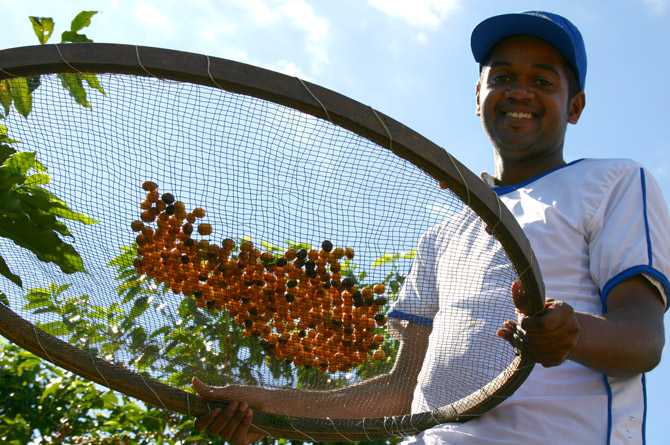The trading pace for arabica and robusta coffee was slow in Brazil in the first fortnight of June, according to the latest report from CEPEA – the economic research center at Esalq (“Luiz de Queiroz” College of Agriculture), USP (University of São Paulo), in Piracicaba.
Dollar oscillated sharply in that period and uncertainties regarding the international market drove agents away from the coffee market, it is said in the report.
Many agents were cautious about both speculations regarding high interests in the United States and the fiscal and political scenario in Brazil.
This context pushed up dollar in Brazil, which closed at 3.92 BRL on June 7. On June 12, however, the American currency dropped to 3.71 BRL. Still, dollar at high levels pressed down the future prices for arabica and robusta.
Besides, agents consulted by Cepea observed that freight prices fixing in Brazil was hampering coffee trades and delivery, mainly in further producing regions, such as northeastern Paraná and Rondônia.
In general, only some trades involving arabica for future delivery were closed, due to firmer prices. On June 15, the CEPEA/ESALQ arabica coffee Index closed at 449.29 BRL (120.71 USD) per 60-kilo bag, 1.6% down compared to that on May 30.
On June 7, the Index closed at 465.92 BRL per 60-kilo bag, the highest level since January 5 this year (values were deflated by the IGP-DI from May/2018).
Regarding robusta, despite the slow trading pace, prices increased slightly in the first fortnight of June, boosted by higher demand from coffee roasters. The CEPEA/ESALQ Index for the robusta type 6, screen 13, Espírito Santo State, closed at 335.51 BRL (90.14 USD) per bag on June 15, a slight 0.2% up compared to that on May 30.
Field
With the slow trading pace, many farmers were focused on the 2018/19 harvesting. Expectations regarding the crop continue positive. The first robusta and arabica batches that have arrived at the market have good quality and screen. According to agents consulted by Cepea, the weather has been favoring fieldwork, contributing for a higher quality beverage in most regions surveyed by Cepea.
Estimates for 2018/19
Many agents consulted by Cepea believe the Brazilian 2018/19 coffee crop will be larger than that estimated by Conab (National Company for Food Supply) in their May report. According to Conab, Brazil should produce around 58 million bags of coffee (arabica and robusta), 29.1% more than the previous season (2017/18), reaching a new production record.
Although Conab’s estimates are similar to forecasts from agents consulted by Cepea (at 60 million bags), there are differences, mainly regarding the robusta output in Brazil and arabica from Zona da Mata Mineira.
According to Conab, the robusta harvesting should total 13.71 million 60-kilo bags in 2018/19, 27.9% up compared to the 2017/18 crop and similar to that expected by Cepea collaborators (14 to 15 million bags). Higher production results from favorable weather during crops development and better farming practices.
In Espírito Santo, while Conab estimates production to total 8.3 million bags, Cepea collaborators believe it may be larger than that, from 9 to 10 million 60-kilo bags this season.
In Rondônia, agents disagree with Conab’s estimates, at 2.18 million bags. According to Cepea collaborators, the crop should be smaller, between 1.3 million and 2 million bags.
Regarding arabica, harvesting should reach 44.5 million 60-kilo bags this year, compared to the 35.4 million bags in the previous season, 29.4% up according to Conab.
The larger output in 2018/19 is mainly linked to the positive biennial cycle in most Brazilian arabica-producing regions, production in new areas and renewed crops, and favorable weather


















